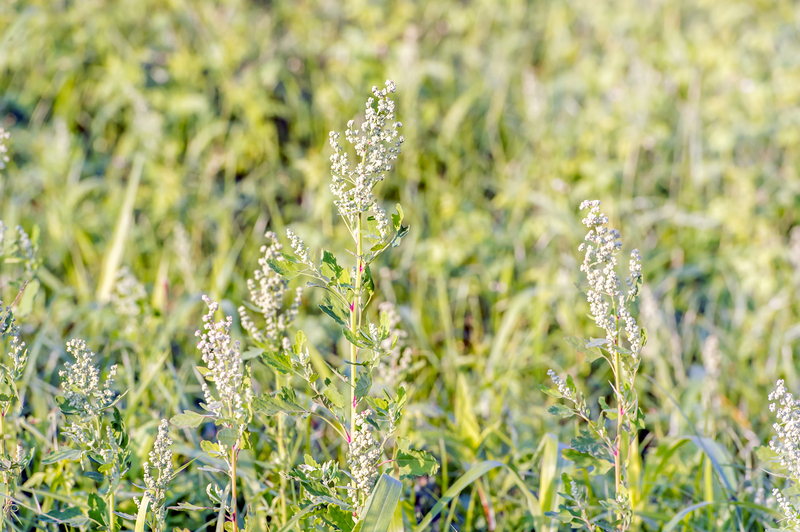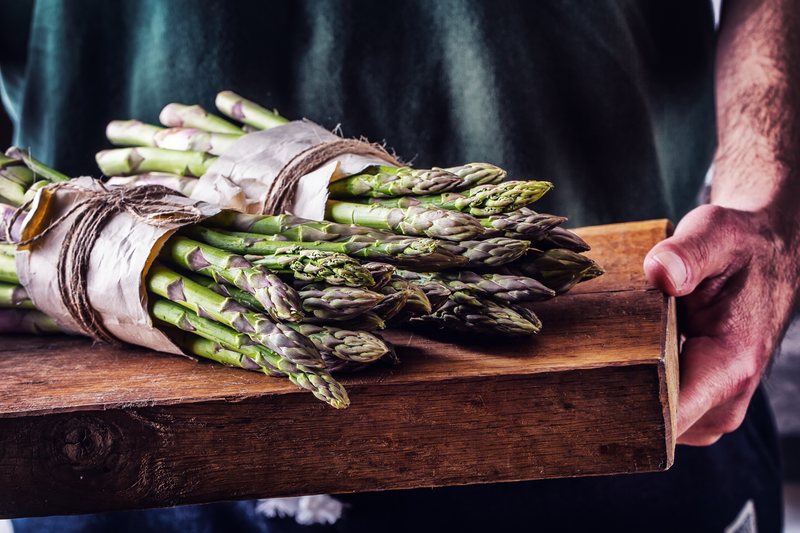Simplify Gardening with These 5 Budget-Friendly Ideas
Posted on 11/09/2025
Simplify Gardening with These 5 Budget-Friendly Ideas
Gardening brings joy, relaxation, and a sense of accomplishment, but it doesn't need to cost a fortune. Whether you're a beginner or a seasoned green thumb, anyone can simplify gardening with smart, efficient practices that don't break the bank. In this comprehensive guide, we'll introduce five cost-effective methods to transform your gardening experience. These budget-friendly tips boost productivity, reduce effort, and help you create a beautiful, thriving garden without a hefty investment.

Why Focus on Cost-Effective Gardening?
Many aspiring gardeners believe that a lush, vibrant garden requires significant spending on tools, fertilizers, and plants. However, gardening can be affordable and sustainable with the right strategies. Embracing cost-effective gardening not only saves money but also:
- Reduces waste
- Encourages creativity
- Promotes sustainability
- Makes gardening accessible for all budgets
Below, discover five practical, budget-friendly ideas that simplify gardening and help you make the most out of every season--no matter the size of your space or wallet.
1. Start Seeds Indoors on a Budget
Why Grow from Seed?
One of the easiest ways to simplify gardening and save money is to grow plants from seeds rather than buying expensive nursery transplants. Seeds allow you to:
- Access a wider selection of plant varieties
- Start more plants for less money
- Control plant health and early growth conditions
Making DIY Seed Starting Kits
No need for pricey seed-starting trays! Household items make excellent seed-starting containers:
- Egg cartons: Biodegradable and easy to fill with soil.
- Yogurt cups and plastic containers: Clean and poke holes in the bottom for drainage.
- Toilet paper rolls: Cut in half, fill with soil, and place on a tray.
*Pro Tip: Use a clear plastic lid or wrap to create a mini greenhouse effect and boost germination.*
Key Takeaway
Starting seeds indoors gives you a larger, healthier garden at a fraction of the cost, simplifying your entire gardening process from the outset.
2. Upcycle and Reuse for Frugal Gardening Supplies
Reimagine Everyday Objects
You don't have to purchase expensive pots, planters, or decorations. With a bit of creativity, you can simplify your gardening efforts by reusing common household materials. Not only does this approach help the environment, but it slashes garden costs considerably.
- Tin cans as plant pots (just punch holes for drainage)
- Old buckets, colanders, and baskets for container planting
- Pallets for vertical gardening or raised beds
- Mason jars for propagating cuttings or growing herbs on sunny windowsills
Make Your Own Compost Bin
Composting is a simple, cost-effective way to reduce waste and enrich your soil for free. Homemade compost bins can be created using old storage bins or wooden pallets. Layer kitchen scraps, yard trimmings, and cardboard, turn regularly, and watch excellent soil-building material form in a few short months.
Benefits of Upcycling
- Reduces landfill waste
- Saves money on garden products
- Adds personal creativity and character to your garden
Remember, the key to economical gardening often lies in seeing new uses for old things!
3. Choose Low-Maintenance, High-Yield Plants
Make Your Garden Work for You
One of the best ways to simplify your gardening routine is to select plants known for their hardiness, low water needs, and abundant harvest. A budget-friendly garden doesn't require excessive attention, frequent replacements, or high-cost maintenance.
The Best Plants for Effortless Success
- Lettuce and leafy greens: Quick to mature and can be harvested multiple times.
- Radishes and beans: Fast growers needing little care.
- Herbs: Basil, mint, parsley, and chives thrive in containers or directly in soil.
- Marigolds and nasturtiums: Bright flowers that deter pests naturally.
- Succulents and drought-tolerant natives: Require minimum watering and attention.
Perennials vs Annuals
Invest in perennials (plants that return year after year) for maximum value. They often require less water, fewer inputs, and less maintenance over time. Good choices include:
- Chives
- Oregano
- Hostas
- Lavender
Pro Tip
Selecting the right plants is the cornerstone of simple, affordable gardening. When in doubt, consult local garden centers about regionally suitable, easy-care plant options for your climate.
4. Master Mulching: Save Time, Water, and Money
Why Mulching Simplifies the Garden
Mulching is a high-impact task that offers several benefits, especially for those looking to maintain a garden with less effort and expense. A good layer of mulch:
- Suppresses weeds
- Conserves soil moisture
- Regulates soil temperature
- Improves soil as it breaks down
Large bags of store-bought mulch can be expensive, but DIY and free alternatives abound.
Budget-Friendly Mulching Materials
- Grass clippings: Use thin layers (to avoid matting).
- Shredded leaves: Available in abundance after autumn.
- Straw and hay: Search for local sources or use old bales.
- Cardboard and newspaper: Layer beneath organic mulch for superior weed blocking.
- Wood chips: Often available for free from tree trimming services.
How to Apply Mulch for Maximum Benefit
- Clear the area of weeds.
- Water the soil thoroughly.
- Apply a 2-3-inch layer of mulch around plants, keeping it a bit away from stems.
By mastering mulching, you reduce ongoing labor, water usage, and reliance on expensive gardening products.
5. Efficient Watering for Thrifty Gardeners
Water Wisely, Spend Less
Watering expenses can sneak up during dry spells, and inefficient watering leads to both waste and higher bills. Simplify watering with these eco- and wallet-friendly techniques.
DIY Drip Irrigation
- Repurposed soda bottles: Fill with water, poke several holes, and bury next to plants for slow-release hydration.
- Soaker hoses: These can be made by drilling holes into old hoses and burying them slightly under mulch.
Collect Rainwater
A rain barrel or large bucket placed under your downspout provides free water throughout the growing season. Always use a screen to keep pests out and check local rules about rainwater harvesting.
Water at the Right Times
- Morning or evening: Limits evaporation and helps plants absorb water more effectively.
- Direct to roots: Use a watering can or hose at the soil level rather than overhead spraying.
Group Plants by Water Need
Arrange plants with similar moisture requirements together. This strategy, called hydrozoning, prevents over- or under-watering and saves both time and money.

Additional Tips for Simplifying Gardening Affordably
- Swap seeds and plants with neighbors or local gardening clubs instead of buying new.
- Make your own natural fertilizers using compost tea or eggshells.
- Prune and propagate: Grow new plants from cuttings of your favorite species.
- Embrace wildflowers and native plants--these typically need less care and water.
Common Budget Gardening Mistakes to Avoid
- Overplanting and crowding seedlings (leads to poor growth and wasted resources)
- Buying too many unnecessary gadgets and tools
- Neglecting soil health (invest a bit upfront in compost or soil amendments)
- Ignoring local plant recommendations
Your Simplified Garden Awaits
Starting and maintaining a cost-effective garden can be easy, enjoyable, and immensely rewarding. By adopting these five budget-friendly gardening ideas, you'll discover that simplifying gardening isn't about cutting corners--it's about working smarter. Remember, the best gardens aren't always the most expensive or elaborate, but those nurtured with resourcefulness and care.
To recap, here are the key points to simplify gardening on a budget:
- Grow from seed with DIY containers and get a jump-start on planting season.
- Upcycle and reuse materials for inexpensive, creative gardening solutions.
- Pick low-maintenance, high-yield plants for big rewards with less effort.
- Master mulching to save time, conserve water, and reduce weeding.
- Implement thrifty watering systems and group plants for efficiency.
Start small, experiment with these ideas, and watch your garden--and your confidence--grow. Happy gardening!

